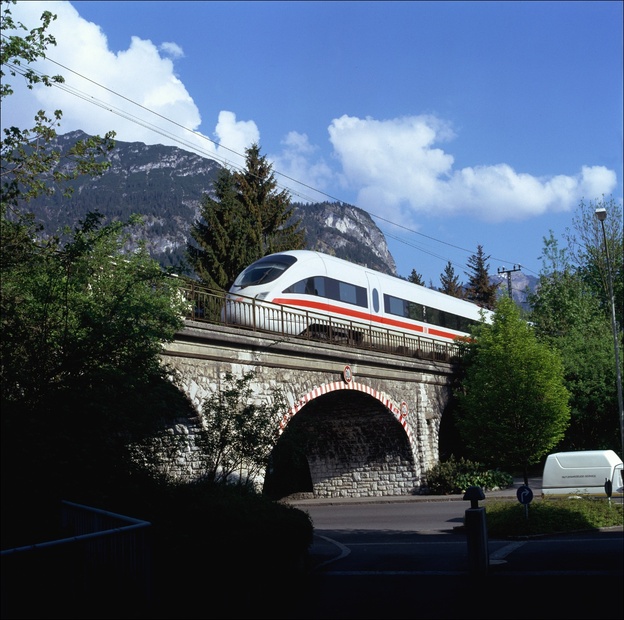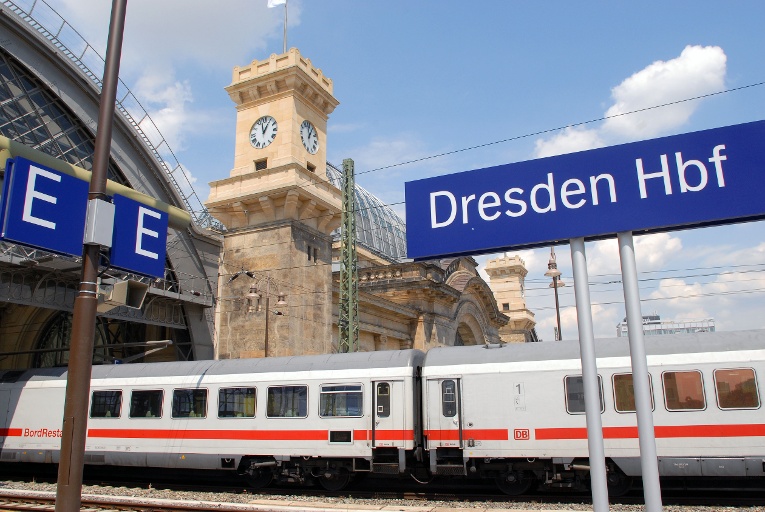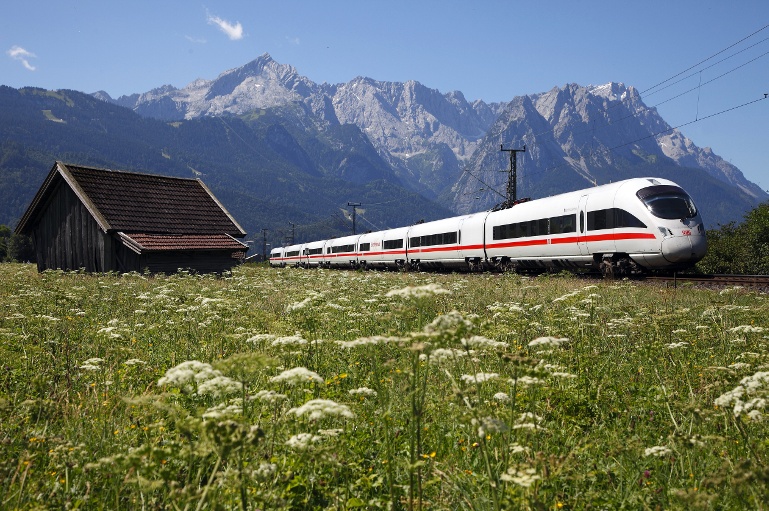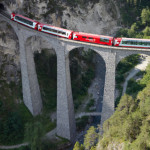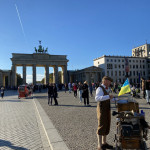On a rainy night in February, I was waiting in Paris’s Gare de L’Est station for the night train to Berlin.
Those last four words are loaded with romance. And I was taking this winter journey in search of the romance of rail travel in a European winter.
As I waited, I tried to recall a train film that gives a sense of the journey, the landscape, the sheer theatricality of a rail journey. After all, you wouldn’t want to travel with the “Strangers on a Train” . And enchanting as “The Polar Express” was, none of us will ever ride it. I was looking for a film and a journey that would take me through wintry landscapes, and be peopled by fascinating strangers who would gather in the restaurant car.
That restaurant car eluded me on the first journey. My night train to Berlin left at 8pm. Deutsche-Bahn, who run the service to Berlin, seem to assume that everyone will have eaten by departure time at 8pm. They provide a tiny ‘buvette’ that sells sandwiches but, apart from a trip through the corridors to visit it, there’s not much to do on the night train but go to sleep.
However the night train to Berlin does hold some romance. After all, you get into your night-gear, roll down the blind, snuggle up in your fairly comfortable bed, chug rhythmically through the night and wake up in a totally different place. As I chugged through eastern France I remembered “Murder on the Orient Express”. Director Sidney Lumet has all sorts of fun with the embarkation process in Istanbul. His glamourous cast parade down the platform, sweeping past peasants and the requisite goats and chickens to board the legendary train.
These opening scenes conspire to make us believe that we too are embarking on a great journey. However, this being an Agatha Christie story, one character has the bad grace to get murdered just as the train gets stuck in a snow-drift and that’s it for the travelogue.
Nevertheless that journey through the snowy Balkans looked gorgeous and, given that I was headed to Berlin and beyond to go On the Trail Of Richard Strauss, a companion feature to this, I was quite sure that soon a modern German train would take me into the winter wonderland where that particular Orient Express failed to go.
My morning approach to Berlin was quite dull – tidy business estates and clean, brisk apartment blocks. I’d slept well, cosy under the spotless white duvet, feet facing the night fields of France with morning tea, breakfast roll and yogurt brought to me by the steward.
Berlin’s main railway station is an ultra-modern affair built on a confusing four levels. No romance there and no snow either – just a grey winter day in Germany. Would any of my three romantic longings – snow, restaurant car, fascinating strangers – be fulfilled?
Four days later, I travelled on to Dresden. This portion of my journey was served by Slovak railways; the train terminated in Bratislava. The rolling stock was sedate. Agatha Christie’s cast might have felt at home. And lo and behold, it had an old-fashioned restaurant car with a cosy wooden veneer and burgundy upholstery . I ordered Borscht from a stolid blonde Slovak waitress as we travelled through a sun-lit birch forest.
Dresden’s main railway station made up for Berlin’s utilitarian terminal. With a vast interior dome like the Pantheon and a grand central hall leading out to the streetcars that take you into the resurrected historic heart of the city, Dresden station serves as a prelude to the renewed grandeur of the city itself.
Next up was Leipzig. A sleek, modern, quiet and very comfortable train, with a sleek, modern restaurant car the German ICE (InterCity Express) whisked me past tilled fields and under grey skies to this beautiful, energetic city whose centuries old position at the forefront of trading and markets is announced by having the biggest, grandest railway station in Germany.
By now I was smitten with train travel in this vast country. Even if I had not yet found my snow-spun landscape, I was smitten with the idea of train travel all over Europe. The whole experience is more fluid – moving through a landscape that we can see, gives our psyches time to adjust to the movement in a way that air travel denies us. Train stations are full of curves, and arches. Airports are all angles.
However, neither snow nor fascinating strangers had appeared on my path. Germany was, alas, having a ‘brown winter’. Garmisch-Partenkirchen, a former Winter Olympics venue, had not seen a flake of snow in town for weeks. After I’d researched Strauss and his life in Garmisch, I jumped on the Mittenwald Bahn, the line that runs from Munich down to Garmisch and on to Innsbruck climbing up through the mountains.
It’s a cosy, local line with maps and pictures of the route on the tables and an ongoing supply of jolly Bavarian villagers carrying skis or hiking boots or chatting over flasks of schnapps. They would have to serve as the ‘fascinating strangers’ of my journey.
And fifteen minutes out of Garmisch, there was the snow! First a sprinkling on the forest floor, then snow on the branches of the trees and as we approached Mittenwald itself, snow was half-heartedly covering the rooftops of this ornate Bavarian town.
I rode on to Seefeld, in the Austrian Tyrol, another 20 minutes along the line. Now the train ascended into deep forest – forest that was white with snow on branches, treetops, covering footpaths and burying benches. When I stepped out onto the platform in Seefeld, my footsteps were muffled by the thick snow on the platform. Satisfied, I walked into the Konditorei across from the station and ordered a hot chocolate.
The last leg of my journey had me back on the 11pm night train out of Munich to Paris. There was, of course, no chance of a restaurant car but Munich’s main station has many excellent places to eat and drink – from the restaurant Mongdratzerl that serves Bavarian tapas to a vast and attractive food court. By the time I climbed into the last of my moving beds, I was happy just to sleep my way across Europe.
Tell me more about the Night Train to Berlin.
Train travel from the UK and throughout Europe can be booked through Voyages.SNCF formerly known as Rail Europe.
Tel: 0844 848 5848
Voyages SNCF Travel Centre, 193 Piccadilly, London W1J 9EU.
London – Paris from £69 standard class return or from £159 Standard Premier (leisure first class) return
Paris – Berlin overnight from £58 one way in a 6-berth couchette or from £66.50 in a double sleeper
Berlin – Dresden from £41 one way in standard class or £65 in first class
Dresden – Leipzig from £30 one way in standard class or £46 in first class
Leipzig – Munich from £84 one way in standard class or £134 in first class
Munich – Garmisch from £22 one way in standard class or £36 in first class
An alternative to point to point tickets is an InterRail Germany Pass. This will offer a discount on the Paris to Berlin journey (although sometimes public fares are cheaper than passholder fares, depending on availability) and allow holders to travel on all of the other services free or charge or with a minimal £3 seat reservation fee. The passes are available for 3,4,6 or 8 days of travel in a one month period. A 6 day pass costs £240 in standard class for adults or £378 in first class.

